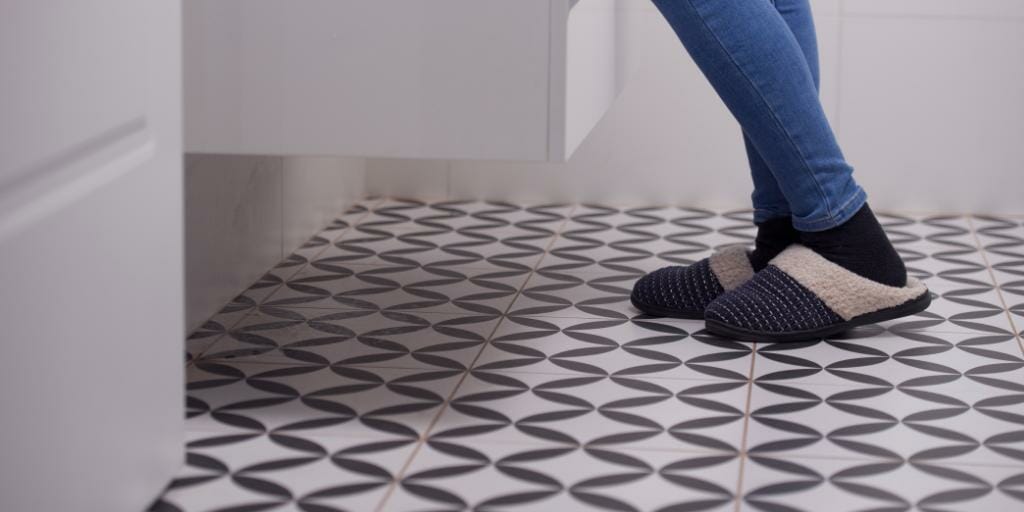Installing underfloor heating will add luxury when you want to pamper yourself and take the chill off your tiles on a cold morning. Your bathroom space is a personal sanctuary that sets the tone for both the beginning and end of your day. Having a floor heating system is also widely considered a key selling point, adding value to your home.
What is underfloor heating?
Underfloor heating can be used to simply warm your floor or act as a primary heat source, replacing your radiators. Underfloor heating involves installing a system of either pipes or wires underneath the floor of a room. This turns the floor into one giant heat emitter to warm the room exactly how you want it. We normally do electric under floor heating, as this is the most convenient when retrofitting a bathroom.
How does it work?
Because underfloor heating heats the room from the ground up, it offers improved comfort levels and less demand on your boiler than a traditional radiator system. This is due to underfloor heating having a lower operating temperature (around 40°C) than a radiator system, which normally operates at around 65°C. Underfloor heating works really well with renewable technology such as heat pumps, which have a low flow rate.
The best flooring for underfloor heating is stone or ceramic tiles but underfloor heating with carpet is possible as well as using wooden flooring with underfloor heating.
Is it expensive/saves money on other heating sources?
UFH is closer to being a ‘radiator’ than an actual radiator is. UFH heats the floor and that heat then radiates into the room. There’s some convection going on but over 80% of heat transfer is by radiation.
This effect is that UFH heats the room from the ground up, providing heat evenly across the room, eliminating cold spots and providing more comfort. An added bonus is that we feel warmer sooner and it’s lovely and toasty on bare feet.
What are the benefits of underfloor heating?
- Reduces cold spots across large areas.
- Run at a lower temperature than radiators, meaning UFH is more energy efficient.
- Compatible with many types of flooring.
- Removing the need for space-stealing radiators, underfloor heating increases the available floor area of a house by 15%.
- Safer for children, and better for indoor air quality.
What are the disadvantages of underfloor heating?
- Installation time can be longer. Even electric underfloor heating may require work to self-level before installation.
- When retrofitting underfloor heating, changes to floor height will need to be considered. This may require extra work in digging out the floor for a level profile.
- When we are refitting a bathroom, we install electric under floor heating as it doesn’t raise the floor by very much at all.
How do I control an underfloor heating system?
Underfloor heating system controls feature two main parts:
- A digital zone control will be used to determine the temperature of each room/area.
- The underfloor heating manifolds and valves that the zone control operates.
The zone control will be placed somewhere where you can make adjustments, while the underfloor heating manifolds will be placed out of the way such as under the stairs or in a cupboard to keep the environment sleek.
There’s no regular maintenance regime associated with underfloor heating, but if things do go wrong, it will typically be with the heating control systems rather than the system itself.
There are various options available to suit your budget and it’s worth keeping in mind that underfloor heating provides substantial cost savings on your energy bills in the longer term. Contact us to find out more, or to discuss whether underfloor heating is right for your project.

